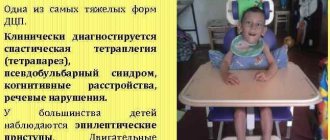What is catatonia
Catatonia, or catatonic syndrome, is a condition in which a person becomes unresponsive to external stimuli and loses the ability to move and speak normally.
Until the beginning of the 20th century, it was believed that this only happened in schizophrenia. But then scientists found out Catatonia: pathophysiology, diagnosis and modern approaches to treatment that more than 50% of cases of catatonia appear in bipolar disorder, about 10–15% occur in schizophrenia, and 21% are not associated with mental illness at all.
Catatonia is similar Catatonia is the evolution of views and modern ideas (literature review) on mental disorders and other diseases, so it is difficult to recognize. For example, with it, as with a stroke, a person may respond with incomprehensible phrases or stop talking altogether. Urgent help is needed in both cases, but it will be different.
Catatonia can develop rapidly or gradually over several days. In the first case, the symptoms are usually strong and obvious; pressure or temperature surges are added to motor and speech disorders. This can lead, for example, to a stroke. In the second option, the symptoms are barely noticeable, and this is the most dangerous: in 3–4 days complications may appear: Catatonia or the person will die.
Imagine a grandmother who suffers from dementia. She often sits on the edge of the bed and looks out the window. But suddenly she spends the whole day like this. Then the grandmother stops talking and reacting to others, but continues to sit. Then she refuses food and water.
The body is exhausted, and 2-3 days after the first symptoms appear, blood clots form in the legs from a long immobile position. At some point they break off and clog the vessel. The man dies. But they would have been able to save him if dangerous symptoms had been noticed on the first day.
Febrile form of the disease
The febrile form of catatonia is characterized by various types of disturbance of consciousness and is an acute psychotic disorder.
It is considered a symptom of schizophrenia, due to the fact that it represents a whole group of diseases, different in nature, and which manifest themselves in acute mental disorders.
It also occurs in affective disorders. The disease is extremely acute, combines psychopathological and somatic disorders that influence each other, and all together can be fatal. Externally, attacks of febrile catatonia are similar to attacks of oneiric catatonia, and are expressed in agitation or stupor. It is advisable to start therapy within the first hours after the onset of the disease.
Febrile catatonia appears against the background of a schizophrenic attack and develops rapidly. A characteristic symptom is hyperthermia. In some cases, hyperpyretic fever appears, in other cases the temperature changes unevenly.
Along with the fever, tachycardia is observed, and there may also be external changes: gray-sallow skin, sharpened facial features, sunken eyes, perspiration on the forehead, wandering eyes, white or brown coating on the tongue, dry lips.
The patient's condition rapidly deteriorates, blood pressure becomes lower, pulse increases, breathing quickens. Death is likely due to vascular insufficiency, which occurs against the background of cerebral edema.
This form of catatonia appears due to hereditary factors, due to the presence of certain genes. The development of pathology can be provoked by abuse of cannabis smoking, low social and economic standard of living, mental and social stress.
This catatonic syndrome requires hospitalization in a psychiatric hospital and electroconvulsive therapy.
Why does catatonia occur?
Catatonia was first described in detail in 1874, but its causes have not yet been established. Scientists have several theories about catatonia: pathophysiology, diagnosis and modern approaches to treatment, which approximately explain what changes in the body lead to the appearance of symptoms of catatonia.
Some researchers believe that the problem lies in a disruption in the transmission of nerve impulses in those areas of the brain that are responsible for muscle contractions. Others associate catatonia with a change in the balance of neurotransmitters - substances that are produced by neurons in the brain and are involved in transmitting signals from cell to cell and many biochemical processes. Still others blame the excess or lack of certain hormones of the hypothalamus and pituitary gland, the production of antibodies to brain proteins.
Such disturbances in the functioning of the body appear in many diseases:
- psychiatric Borisova P. O. Nosological dilemma and clinical polymorphism of the phenomenon of catatonia. , for example bipolar disorder, schizophrenia, autism, depression, anorexia nervosa;
- endocrine: Cushing's syndrome, hyperthyroidism, Sheehan's syndrome and others;
- neurological, for example epilepsy, multiple sclerosis, Parkinson's disease, brain tumors, dementia;
- metabolic - this is when substances accumulate in the body that have a bad effect on the brain: this happens with Wilson-Konovalov disease, an increase and decrease in sodium concentration in the blood, kidney failure and other diseases;
- autoimmune, for example systemic lupus erythematosus, antiphospholipid syndrome;
- Catatonia caused by psychoactive substances: alcohol, antipsychotics, sedatives, drugs;
- infectious Catatonia: HIV, typhoid fever, tuberculosis, meningoencephalitis, herpes and others;
- vascular, for example thrombosis of the arteries and veins of the brain, stroke, cerebral hemorrhage.
Causes
Catatonic syndrome can manifest itself in a variety of diseases, the reasons for its manifestation are as follows:
- The body lacks gamma-aminobutyric acid. In this case, numbness begins to act from above. First, the top of the head is paralyzed, and only then it penetrates through the cervical region into the rest of the body.
- There is an excess of glutamate. With long-term use of drugs with benzodiazepines, which help normalize acid in the brain, there is a risk of poisoning.
- Deficiency of dopamine production. This drug is quite justified in use in the treatment of schizophrenia. When taken, dopamine actually has an indicator of deficiency in the body. If catatonic stupor is also treated with the use of similar drugs, its symptoms will only worsen.
- The use of Clozepine, which activates the cholinergic and serotonergic systems. This drug is an excellent solution for the treatment of schizophrenia. Everything would be fine, but after the drug stops entering the body, i.e. it is canceled, other systems in the body begin to activate, which leads to the development of catatonic stupor.
What are the symptoms of catatonia?
Catatonia has many symptoms. In the DSM-5 reference book, which is used by psychiatrists all over the world, 12 main Catatonia are identified. But doctors add other symptoms to them:
- Remaining motionless (stupor).
- Long-term maintenance of the posture given to the body (catalepsy). If you plant or stand a person, he will not move.
- Prolonged silence (mutism). The person does not respond, even if addressed by name. On the contrary, he will most likely turn away.
- Changing the position of the limbs, like a plasticine figurine (wax flexibility). Some patients easily obey and can follow any command, like robots.
- Passive and strong resistance to any attempts to change the position of the arms and legs (negativism). Sometimes it is physically impossible to bend or straighten the limbs.
- Maintaining an awkward posture (posing). For example, a person can bend over on the bed without touching the pillow with his head, as if hanging in the air.
- Pretentiousness of movements (manneriness). Someone with catatonia may gesticulate strangely and inappropriately.
- Repetitive monotonous movement (stereotypy). Remember how in horror films the possessed constantly sway, tap their fingers, or move their mouths creepily. Most likely they are having an episode of catatonia.
- Excessive arousal without external stimuli. A person can rush around the room, show aggression, and rush at others.
- Involuntary movements of the lips and eyebrows. Grimaces that are not made to amuse others.
- Repeating someone else's words (echolalia). Moreover, speech often becomes incoherent, monotonous, words and phrases are spoken continuously, sometimes for a very long time.
- Copying other people's movements (echopraxia).
Additionally, symptoms may occur Neznanov N. G., Kuznetsov A. V. Clinical and psychopathological aspects of the pathomorphosis of catatonic disorders associated with disruption of the autonomic nervous system. With catatonia, the temperature rises, thirst increases, saliva flows, blood pressure rises and the pulse quickens. Patients often refuse water and food.
When a doctor makes a diagnosis, he looks for a combination of several signs. But medical attention is needed even if one symptom appears. Otherwise, you can miss not only catatonia, but also a stroke, the onset of schizophrenia, a complication of meningitis or another disease.
How is catatonia treated?
If a person cannot move or does not respond to calls to him, an ambulance must be called. If the symptoms are mild, it is important to go to a therapist as soon as possible.
From the words of relatives or by analyzing a medical record, the doctor will determine whether there are mental illnesses, alcohol addiction or other pathologies that can cause catatonia. And if necessary, he will send you to a psychiatrist.
He will prescribe medication or electroconvulsive therapy as quickly as possible.
If there is no danger to the patient’s life, the Catatonia examination will help find the causes of catatonia:
- general blood analysis;
- biochemical research;
- analysis of blood electrolytes;
- liver function tests;
- or MRI of the brain.
An electroencephalogram will be performed if there is a suspicion of a brain tumor or seizures.
What medications are prescribed
To eliminate catatonia, the psychiatrist uses strong prescription medications. Taking them on your own is dangerous.
First of all, they give drugs Catatonia: pathophysiology, diagnosis and modern approaches to treatment from the group of second-generation anxiolytics based on benzodiazepine. They reduce muscle spasms, calm, and help remove the symptoms of catatonia. Benzodiazepines are effective Systematic review of catatonia treatment in 66–100% of patients.
If these drugs do not help, the treatment regimen is changed. Sometimes alternative drugs with sedative, anticonvulsant and muscle relaxant effects provide the best effect. For example, lithium drugs Catatonic syndrome: From detection to therapy will not allow a recurrence of an attack of catatonia.
Medicines from the group of neuroleptics are prescribed Catatonia: pathophysiology, diagnosis and modern approaches to treatment rarely: it is impossible to guess how the patient’s body will react. On the one hand, drugs can relieve muscle spasms. But at the same time, they can cause neuroleptic malignant syndrome. This is a condition when the temperature and blood pressure rise and the symptoms of catatonia intensify.
In what cases is electroconvulsive therapy used?
Electroconvulsive therapy is a treatment that uses electric current through the brain. It suppresses areas that emit abnormal impulses and helps relieve muscle spasms and cramps.
Is electroconvulsive therapy an evidence‑based treatment for catatonia? A systematic review and meta-analysis if benzodiazepines are ineffective or if the patient can Is electroconvulsive therapy an evidence-based treatment for catatonia? A systematic review and meta‑analysis to die.
Sometimes, after using electroconvulsive therapy, attacks of catatonia completely stop. But there is a risk. Is electroconvulsive therapy an evidence‑based treatment for catatonia? A systematic review and meta‑analysis of side effects: headache, amnesia, confusion.
Catatonia and Autism Spectrum Disorders: Diagnosis, Therapy and Clinical Science 819
Introduction Catatonia is a severe and potentially life-threatening acute disease, especially in its malignant form when it is accompanied by autonomic dysfunction and high fever, but is curable when recognized and treated promptly [18]. It occurs in children and adolescents, as well as in adults, in a variety of forms, including somatic and autoimmune diseases, such as systemic lupus erythematosus [1; 25; 27], anti-NMDA receptor encephalitis [14; 22; 38], psychotic and affective disorders, toxic conditions such as neuroleptic malignant syndrome (NMS), autism spectrum disorders (ASD), developmental disorders including patients with Prader-Willi syndrome and Down syndrome, tic disorders, post-traumatic conditions and various syndromes, such as Kleine-Levin syndrome and pervasive withdrawal syndrome [12; 16]. There are no controlled studies of benzodiazepines or electroconvulsive therapy (ECT) in children and adolescents. Clinical experience and case reports support the use of benzodiazepines and ECT, including maintenance ECT, as safe treatments for catatonia in children and adolescents without the risk of precipitating NMS [12; 16]. In general, for adult patients with mental illness, benzodiazepines are effective in half and up to 80% of cases, the rest usually respond to ECT [1]. A remarkable finding for some catatonic patients is that high dosages of benzodiazepines, such as the 10-20 mg range of lorazepam, are required for improvement and are well tolerated without any side effects. Catatonia is increasingly recognized as a comorbid syndrome in adolescents and young adults with ASD [3; 39] and with other intellectual disabilities [10; 34]. Two systematic clinical studies show that catatonia occurs in 12–17% of adolescents and young adults with autism [3; 39]. Wing & Shah report that 17% of a large sample of adolescents and young adults with autism met current criteria for catatonia [39]. Thirty people with autism aged 15 years or older met criteria for catatonia with classic autistic disorder diagnosed in 11 (37%), with atypical autism in 5 (17%) and with Asperger's syndrome in 14 (47%).Under the age of 15 years, no child demonstrated a complete catatonic syndrome, although isolated catatonic syndromes were often observed Symptoms: In most cases, catatonic symptoms appeared between the ages of 10 and 19. Five people experienced brief episodes of lethargy and numbness in childhood before the age of 10. In some cases, obsessive-compulsive and aggressive behavior preceded catatonia. Visual hallucinations were sometimes reported or paranoid ideation, but a diagnosis of schizophrenia could not be established.In another study, 13 people (12%) of 120 people with ASD aged 17 to 40 years were clinically diagnosed with catatonia with severe problems initiating movements [3]. Another four individuals had some catatonic symptoms but did not meet criteria for the full syndrome. Eight of the 13 people with catatonia had autistic disorders; the remaining five were diagnosed with atypical autism. The proportion of individuals with autism who were diagnosed with catatonia was 11% (8/73). Fourteen percent (5/35) of people with atypical autism had catatonia. A hospital study of 101 psychiatric inpatient children and adolescents with a diagnosis of “at risk,” including any pervasive developmental disorder, psychotic disorder not otherwise specified, intermittent explosive disorder, intellectual development disorder, neuroleptic malignant syndrome, or previously diagnosed catatonia, found that 18% of patients met criteria for catatonia based on three or more symptoms, including unexplained agitation or agitation, abnormal or unusual movements, movement restrictions, impaired or loss of speech, and repetitive/stereotypical movements [19]. The authors highlighted the poor diagnosis of catatonia in these conditions, which included, but were not limited to, pervasive developmental disorders. Breen & Hare [4] developed the Abbreviated Behavioral Questionnaire (ABQ), a 34-item third-party questionnaire covering 15 motor symptoms, 5 affective symptoms, and 14 behavioral symptoms commonly associated with catatonia in ASD. They tested the new method on a UK sample (N=99) of consenting young people aged 12–25 years diagnosed with ASD, interviewing parents or regular carers. Complete data were obtained from 87 respondents, of whom 18 (21%) reported a current diagnosis of catatonia. Forty-two (48%) cases presented three or more major catatonic-like types of altered behavior. The results of the new ABQ method were higher for those with diagnosed catatonia. Catatonic-like cases of altered behavior have been associated with symptoms of depression and stereotypic behavior. The study did not report how pre-existing clinical diagnoses of catatonia were obtained, but does support the ABQ as a clinical and research tool for identifying catatonia symptoms in populations of youth with ASD.
Many patients with ASD cannot be definitively diagnosed as having mood or psychotic disorders due to the fact that these patients are nonverbal and have severe cognitive impairment, but the observed signs and symptoms are easily recognizable. Most cases of catatonia in children and adolescents with ASD are not associated with any underlying medical or psychiatric condition. For example, in a sample of 58 children and adolescents with catatonia, 18 (31%) had a history of developmental disorders, i.e., ASD, intellectual disabilities, or neurodevelopmental disorders. Only two of them had identified somatic or genetic diseases [8].
Clinical manifestations of catatonia
Catatonia in ASD is currently diagnosed based on the DSM-5 by the presence of three of 12 symptoms [2]: catalepsy, waxy flexibility, stupor, agitation, mutism, negativism, odd postures, mannerisms, stereotypies, grimacing, echolalia, or echopraxia. These symptoms may be present initially in patients with ASD. However, a sharp increase in previously present symptoms or the sudden appearance of new ones should alert the clinician and force an assessment for a diagnosis of catatonia [11; 21; 39]. Several diagnostic scales for catatonia have been developed [33]. The most commonly used is the Bush-Francis Scale (BFCRS), a standardized 23-item instrument designed to diagnose and assess the severity of the condition [6]. Using the BFCRS, catatonia can be diagnosed if two or more of the first 17 items are present. Serial assessments of catatonia are useful for detailing changes over time and for assessing changes during treatment [5] in individual cases and in controlled studies. Although the Bush-Francis Catatonia Scale is useful for patients with autism, it was developed in a sample of adult general psychiatric patients. There are currently no standardized catatonia rating scales for patients with autism. The KANNER scale, named after Leo Kanner (1894–1981), who described the neuromotor and neurodynamic features of autism [23], has been proposed as a single tool for quantifying the core features of catatonia in a wide range of neuropsychiatric disorders, including autism and pervasive developmental disorders [ 7]. This scale is comprehensive but has not been tested or validated in patients with autism. Self-injurious behavior (SIB) occurs regularly in patients with ASD and includes behaviors such as hitting, punching, biting, scratching, and kicking. SPP can lead to significant soft tissue injury, bone injury, head injury, retinal detachment, blindness, or even death [29]. Operant conditioning often underlies SSP [26], but a sudden increase in SSP can sometimes be part of the general stereotypical behavior observed in catatonia. Wing and Shah reported the presence of catatonic stereotypies in 23–46% of the patients with autism they observed [40]. Although they did not observe self-injurious behavior within stereotypic behavior, the repetitive nature of such behavior suggests that there is a significant correlation between SIB, catatonia and ASD. Wachtel and Dhossche hypothesized [36] that catatonia may be the cause of extreme or increasing self-injurious behavior in some patients with ASD, that they should also be monitored for other symptoms of catatonia, and that they could be treated with ECT. Initial and promising experience in this area and the profound impact of ECT in such cases have been described elsewhere [35].
Clinical treatment of catatonia
In 2014, DeJong et al. reviewed all relevant research since 1980 on interventions used to treat catatonia in ASD, identifying 22 relevant studies covering 28 adult, child and adolescent cases, with the majority of studies were conducted in the USA [9]. They report evidence of specialist support for the use of ECT, high-dose lorazepam and behavioral interventions in this group of patients and regret the lack of convincing evidence in this area, the evidence base consisting only of case reports, small case series and clinical impression, with poor quality of management treatment protocols and recording of objective indicators and results. This study highlights the urgent need for prospective long-term studies and controlled trials.
Case description
A 14-year-old boy, R., was born at term after a normal pregnancy. At age three, he was diagnosed with ASD with mild intellectual disability due to social deficits, communication problems, and cognitive impairment. He began working with a speech therapist and was enrolled in a special education class. Genetic testing was performed and the result was negative. There was no previous diagnosis of ASD in his family. In elementary school, he was periodically treated with stimulants as a hyperactive child with impulsive behavior, with good results. He also had a mild tic that did not require treatment. R. did well at school, spoke fluently and could act quite independently.
During his first year of high school, there was a sudden and dramatic increase in abnormal movements, including repeated head turning to the left, blinking, grimacing, stuttering, repetitive finger movements, and eye rubbing. He began to speak less and only in a high voice. Upon examination by a neurologist, he was also found to have waxy flexibility, but was otherwise determined by the neurologist to be a neurologically intact adolescent. His food and fluid intake decreased, and the patient began to lose weight and have trouble sleeping. R. experienced episodes of contemplation, withdrawal, and episodes of compulsive hand washing and frequent showering. He became anxious and preoccupied with death, and began to have crying spells. His expression became tense and mask-like. His writing ability deteriorated and his grades dropped. Several weeks after the onset of these symptoms, the patient told his uncle that he had been bullied at school. Physical abuse and serious peer threats were confirmed following a school investigation. After the appearance of these abnormal movements, a magnetic resonance imaging of the brain and an electroencephalogram were performed, which showed negative results. Genetic testing, metabolic and autoimmune testing, serum copper and ceruloplasmin tests were negative. Over the next year, his psychiatrist prescribed a long list of medications for tics and anxiety, including several selective serotonin reuptake inhibitors (fluoxetine, sertraline), duloxetine, mirtazapine, atypical antipsychotics (risperidone, aripiprazole), fluphenazine, clonidine, guanfacine, and low doses) benzodiazepines (4 mg diazepam, 0.5 mg lorazepam and clonazepam). This treatment was found to be futile or resulted in side effects that required medication interruption. A single dose of zolpidem (10 mg) caused agitation and increased tics. P. did not swallow tablets regularly and only took liquid medications or dissolvable tablets. P's condition continued to deteriorate and he required assistance with eating, dressing, brushing his teeth and combing his hair. His speech consisted of short phrases spoken in a high-pitched voice and remained heavily abbreviated. He shook his head and chattered his teeth incessantly, shuddered exaggeratedly, and remained withdrawn in episodes of excitement. His neurologist suggested a diagnosis of catatonia and recommended ECT more than a year after the onset of symptoms. The diagnosis of catatonia was confirmed, and systematic treatment with lorazepam began, starting with 1 mg orally twice daily with rapid escalation to 7 mg twice daily for ten days. Because the boy showed minimal improvement, ECT was recommended. Increasing the lorazepam dose to 16 mg resulted in sedation and increased agitation. Bilateral ECT was started on an outpatient basis while lorazepam was tapered. After 12 sessions of bilateral ECT, the catatonia resolved and the patient returned to baseline. ECT was discontinued and maintenance ECT was not required. He had no relapses during 2 years of follow-up. R.'s maintenance treatment consists of olanzapine 25 mg orally and lorazepam 6 mg orally per day.
A comment
In this patient, catatonia was diagnosed late, and treatment was accordingly delayed, since the symptoms appeared a year before the neurologist made the official diagnosis of catatonia. This is an unfortunate but not uncommon situation these days. There is a persistent misconception that a patient with ASD cannot also have symptoms of catatonia. This is likely an echo of the long-standing but erroneous belief that catatonia indicates a diagnosis of schizophrenia. Patients with ASD often have difficulty describing symptoms, but the significant change in baseline level of functioning and behavior, as seen in this case, is reason for a more thorough assessment and subsequent development of a treatment protocol. It may be possible to schedule ECT after an acute episode as maintenance treatment to prevent relapse and when incipient symptoms of catatonia appear. It is advisable to schedule ECT on a flexible basis, with discussion and communication between clinic staff and the ECT service. Other authors have reported the importance of ECT as maintenance treatment for sustained symptom remission [37]. Long-term ECT treatment is often the only possible means of preventing relapse, as in the case of patients without autism [24; thirty]. The development of catatonia was preceded by significant stress. Traumatic events and stressors are not always easy to recognize, as it may be difficult for a patient with ASD to express this stress due to problems with communication and conveying subjective experiences. Shah and Wing [32] found that prolonged stress experiences often precede the development of catatonia in autistic youth. Life turmoil, loss of routine and structure, bereavement, conflicts with parents, educators or peers, and a discrepancy between the capabilities of a young person with ASD and the expectations of parents can trigger catatonia. The observations that catatonia follows overwhelming anxiety due to trauma or perceived danger, the beneficial effects of treating catatonia with anxiolytics such as benzodiazepines or barbiturates, and psychogenic theories of catatonia [28] are particularly applicable to people with autism due to their increased social, cognitive and sensory vulnerability [13; 17]. The vagal theory of catatonia in ASD has been proposed [15] as an extension of the general polyvagal theory in the biology of social engagement and attachment, first formulated by Porges in 1995 [31] as a basis for integrating the various pathophysiological and treatment aspects of catatonia in ASD.
How successfully is catatonia treated?
The sooner catatonia is treated, the better for the patient. Quick help helps to avoid complications and save life.
But not everyone recovers. According to Catatonia statistics, 12–40% of patients are successfully cured. The prognosis is poor in children and adolescents with schizophrenia, as well as in older adults. They may require Catatonia ongoing psychiatric care.
If a person has long suffered from kidney failure, alcoholism, Parkinson’s disease or other pathology, then the disturbances in brain function are already chronic. Therefore, at any moment, catatonic syndrome can recur. Catatonic syndrome: From detection to therapy. In order not to be late with help, you need to remember the dangerous symptoms and follow the doctor’s recommendations.
History of disease research
Since its initial description, catatonia has remained a poorly defined clinical condition characterized by impaired motor behavior originally described in the presence of another severe mental illness. It is a complex syndrome that has undergone significant evolution since it was originally described as a subtype of schizophrenia. The condition is now thought to result from a variety of medical and psychiatric conditions and may be more related to mood disorders than schizophrenia.
It is noted that one of the main reasons for the frequent misdiagnosis of catatonia is the persistent misconception that it is synonymous with schizophrenia. However, this proposal was not universally accepted, and much debate arose regarding the most appropriate classification of catatonia.
It was Carl Ludwig Kahlbaum who first saw the connection between psychomotor symptoms and mental disorders in 1874. And this year he coined the term “Die Katatonie” to describe the syndrome “with a cyclical alternating course in which the mental symptoms are successively the following: melancholy, mania, stupor, confusion and, ultimately, dementia.”
He also combined 17 movement disorders into a single syndrome in patients with a variety of disorders, including mood disorders, psychosis, neurosyphilis, tuberculosis and epilepsy.
In 1899, Emil Kraepelin proposed that catatonia should be classified phenomenologically along with other forms of dementia precoxa or dementia precoxa (the obsolete name for schizophrenia): hebephrenia and paranoia. And by 1913, catatonia had become “1 of 8 subgroups into which schizophrenia was divided.
Thus, in the works of Kraepelin and Bleuler, catatonia became synonymous with behavioral immobility and abstinence, a symptom often associated with schizophrenia, and was subsequently classified as schizophrenia, although not all authors of that time shared this point of view.
This has led to ongoing controversy in the Diagnostic and Statistical Manual of Mental Disorders (DSM). Thus, in the DSM-I and DSM-II and in the International Classification of Diseases (ICD), catatonia was classified as a type of schizophrenia, and this assumption was formalized throughout the life of the DSM-III classifier.
This began to change in the 1970s, when researchers noticed that catatonia was more closely associated with mood disorders and idiopathic or primary disorders than with schizophrenia.
For example, Fink and Taylor argued that catatonia should not be associated exclusively with schizophrenia. This led to the 1994 DSM-IV recognizing catatonia as a disorder that could either complicate general health or be a feature of mood disorders. At the same time, debate continued to support catatonia as a separate diagnostic category.
The development of rating scales and more effective screening procedures led to the discovery that 9% to 17% of patients in psychiatric institutions and emergency departments met criteria for catatonia—even more among patients with mood disorders or toxic conditions than among patients with schizophrenia.
It has also more recently been suggested that catatonia is relatively common among patients diagnosed with autism, particularly in autistic children.
In addition, there is increasing recognition of “secondary” catatonia, which develops due to organic causes such as neurological diseases (including tumors), drug intoxication or withdrawal, and other metabolic disorders, including paraneoplastic syndromes.
On a larger scale, catatonia has been associated with other neuropsychiatric syndromes such as delirium, serotonin syndrome, and neuroleptic malignant syndrome.
In a review, Wijemann and Jankovic emphasized 2 subtypes of this disorder: malignant and periodic. Malignant catatonia is the most severe form of this syndrome and is more common in the presence of organic disease, illicit or therapeutic drug toxicity, or other metabolic encephalopathy.
Intermittent catatonia is characterized by repeated episodes of illness lasting 4 to 10 days, which can occur over many years. This condition appears to be less common than the malignant form and is reported as an autosomal dominant disorder. Intermittent catatonia is often noted among patients with bipolar disorder, in which the patient oscillates between stupor and agitation.
How to avoid getting catatonia
Scientists have not yet learned how to prevent catatonia, like other mental illnesses or brain tumors. But, taking into account the causes of the syndrome, we can advise the following:
- Reduce alcohol consumption, and if you have symptoms of addiction, get treatment.
- Never use drugs.
- Don't ignore symptoms of depression.
- Do not take sleeping pills, sedatives, or antipsychotics without a specialist’s prescription. Catatonia: pathophysiology, diagnosis and modern approaches to treatment.
- See a doctor if you have headaches, dizziness, or spots in your eyes.
- Treat kidney and liver diseases in a timely manner.
- Avoid casual sex to protect yourself from HIV and syphilis.
- Monitor your weight and avoid stress so as not to worsen the condition of your blood vessels.
- Pregnant women should register on time and follow the doctor’s recommendations so that the birth goes smoothly.
- Try not to injure your head.










